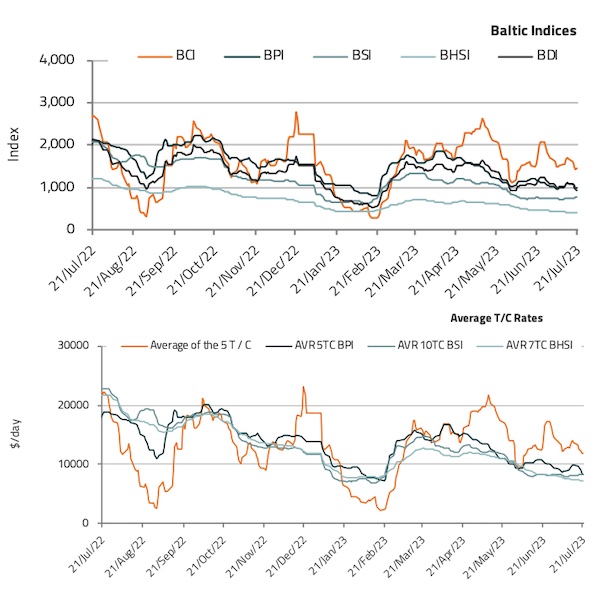Tankers: Crude Flows Constantly Shifting

Seaborne crude oil flows keep on changing, with China having recently emerged as major buyer of US crude oil. In its latest weekly report, shipbroker Intermodal said that “the recent commitment from Russia and Saudi Arabia to production cuts, coupled with Saudi Aramco’s consecutive increase in OSPs to Asian customers, has prompted Asian buyers to seek alternative sources of crude oil. Notably, in June alone, China’s imports of U.S. crude soared to 3.05 million mt, representing a remarkable 354% y-o-y increase and reaching the highest volume recorded since December 2020, as per data from the General Administration of Customs China (GACC). Similarly, the narrow Brent/Dubai EFS spread, which made Brent-linked crude highly attractive in the Asian market, paired with low freight rates, has facilitated increased shipments of crude oil from Brazil to China”.

Source: Intermodal
According to Intermodal’s Research Analyst, Ms. Chara Georgousi, “looking ahead to Q3, the market’s concern lies in Chinese refiners’ future actions, influenced by crude prices. Should OPEC+ succeed in bolstering prices through output restrictions, it is anticipated that Chinese refiners might curtail some of their crude imports, opting instead to draw from existing inventories to fulfill any potential surge in domestic demand. Conversely, if prices maintain stability around the $75 per barrel mark, it is probable that China will sustain its crude oil imports at relatively robust levels”.
“Early indications are pivoting towards heightened purchasing interest, particularly for more competitively priced crude grades from the Americas, specifically the U.S., and Brazil. In anticipation of this demand, Chinese refiners have already secured near-record volumes of U.S. crude for shipment in August, opting to replace Middle Eastern oil due to the allure of competitive pricing and abundant supplies. The projected volume of August crude shipments from the U.S., mainly comprising WTI Midland grades, is estimated to be between 1.5 and 1.9 million bpd, slightly less than the record 2.2 million bpd loaded in April. Likewise, the country has already procured nearly 1 million bpd of Brazilian crude for delivery in August and September. The increase in supplies from Brazil coincides with the end of a temporary tax on the country’s oil exports and is anticipated to exceed the average imports during the first five months of the year, wherein China received 729,125 bpd of Brazilian crude, according to Chinese customs data”, Ms. Georgousi said.

Source: Intermodal
“The preference for U.S. and Brazilian crude could be particularly beneficial seaborne-wise. More specifically, a VLCC voyage from the U.S. Gulf or Brazil to China typically takes 40-50 days, while a similar journey from the Middle East Gulf to China lasts about 20 days, so large tankers could be particularly favored. As a result, VLCC tonne-mile growth is expected to rise in the coming weeks after observing relatively low volumes of U.S. crude shipments to China via VLCCs in May and June, which marked the lowest figures since early last year”, Intermodal’s analyst concluded.
Nikos Roussanoglou, Hellenic Shipping News Worldwide

